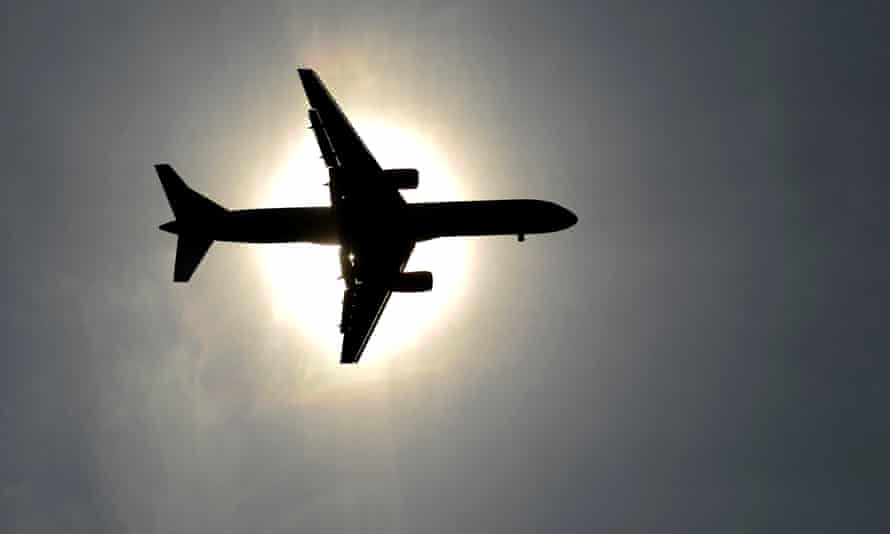Extract from The Guardian
The targets envisioned by the Paris Agreement leave no room for fossil fuelled commercial aviation by 2050.

Covid has slashed flight numbers and the impact on tourism in New Zealand hasn’t been as bad as feared
Aviation is an important part of the global economy; until Covid-19, it was responsible for 2.8% of global CO2 emissions. In New Zealand, aviation is responsible for an even higher percentage of CO2 emissions, the figure having doubled since 1990 to 13% in 2018. The country’s geographic isolation, transport system, international tourist industry, and globally dispersed families have all contributed to the jump in growth and will make reducing emissions a challenge.
But New Zealand has signed up to net zero emissions by 2050 and enacted the Zero Carbon Act, which aims to implement policies that will limit the global average temperature increase to 1.5C, in line with the Paris Agreement.
The 1.5C target allows no room for fossil fuelled commercial aviation by 2050. So the public, the aviation and tourism industries, and the government must turn their attention to first capping and then reducing emissions.
There are signs that this is beginning to happen. There are protests over the expansion of Wellington airport and over a proposed new international airport at Tarras, which would serve the Queenstown Lakes region and fuel rapid increases in emissions. And two new government reports – the draft advice of the Climate Change Commission (CCC), and a report on the environmental impact of tourism by the Parliamentary Commissioner for the Environment (PCE) – have put the issue squarely on the table.
The CCC’s main recommendations affecting aviation are to develop low-carbon fuels (to form 1.5% of all liquid fuel use by 2035) and to increase the price on carbon to at least $NZ140/tCO2 by 2030, up from a spot price of around $39 in late February (compared to the Air New Zealand offset price of $23). It has also drafted carbon budgets that allow room for international aviation and shipping to be included in the net zero 2050 targets.
The PCE has grappled more directly with the issue, making aviation emissions a key focus. The report recommends a distance-based departure charge of NZ$25 to Australia, and NZ$155 to the US or UK, closely modelled on the UK’s Air Passenger Duty (currently £80 or NZ$152). The revenue would be used to develop low-carbon fuels and to fund climate change work in the Pacific. This would also serve as a role model for other countries willing to take more ambitious action.
All these moves would add up to a significant first step. Unfortunately, it would still be a small step. The suggested carbon price would add NZ$6 to an Auckland–Wellington flight, which currently sell for for anything between NZ$25 and NZ$279. Analysis commissioned by the PCE demonstrates that the proposed departure charge would have a very limited effect on demand.
What should we do next? Flying has to reduce. A recent report on a zero-emission future for the UK envisions a complete end to commercial aviation in the next few decades, arguing that prospective “breakthrough” technologies like hydrogen and electric planes will not arrive fast enough nor scale up quickly enough, and mainly serve to delay action now. Work on alternative domestic travel options, including a low-emission, high-quality national public transport network, needs to start immediately. Notably, Covid has reduced flying by 80%, and, while a major crisis for the sector that no one wanted, the impact on New Zealand tourism and on the economy as a whole has not been nearly as bad as first feared.
A study by one of us (Paul Callister) together with industrial chemist Wallace Rae considered a range of options if we want to keep flying . We concluded that sustainable aviation fuel, produced by a “Power to Fuel” process, was the only realistic path. Electricity, water, and CO2 are used to create jet fuel that can be used in existing planes. But Ian Mason, a renewable energy engineer at the University of Canterbury, found that it would need at least an extra 28,000 GWh per year of electricity, two-thirds of the entire current supply, and at a time when many other sectors of the economy are seeking to electrify.
There is already one Power-to-Fuel plant under construction in Norway (Norsk E-fuel, fuelled by hydropower) and much larger ones are proposed for the Netherlands (Synkero) and Chile (Haru Oni, to be fuelled by the plentiful wind around the Straits of Magellan).
New Zealand, which has ample supplies of wind and sun, also has experience in producing synthetic fuels: the Motunui synthetic petrol plant was commissioned in 1987, the first of its kind in the world. And the country is already extracting CO2 from the Kapuni gas field, although rather than putting it to use to make sustainable fuel it is currently releasing it into the atmosphere.
The Office of the Parliamentary Commissioner for the Environment is a rare institution. The commissioner, Simon Upton, has wide powers to investigate any matter related to the environment; the catch is that nobody has to take heed of the commissioner. Nevertheless, through a process of broad-ranging enquiry and clear communication, the office has become widely trusted, and some of its reports have proved to be turning points. The timing of this report could not be better. The government should respond decisively and ensure that aviation plays its part in the end of fossil fuels.
Dr Paul Callister is a senior associate at the Institute of Governance and Policy Studies, Victoria University of Wellington, whose current research centres on climate change policy and sustainable transport.
Robert McLachlan is a distinguished professor in applied mathematics at Massey University and is a leader in the field of geometric numerical integration
No comments:
Post a Comment